What is liposuction?
Liposuction, sometimes referred to as “lipo” by patients, slims and reshapes specific areas of the body by removing excess fat deposits and improving your body contours and proportion.
What liposuction can treat
- Thighs
- Hips and buttocks
- Abdomen and waist
- Upper arms
- Back
- Inner knee
- Chest area
- Cheeks, chin and neck
- Calves and ankles
Liposuction can be performed alone or along with other plastic surgery procedures, such as a facelift, breast reduction or a tummy tuck.
What liposuction can’t do
Liposuction is not a treatment for obesity or a substitute for proper diet and exercise.
It is also not an effective treatment for cellulite—the dimpled skin that typically appears on the thighs, hips and buttocks—or loose saggy skin.
Who is a good candidate for liposuction?
Liposuction is a highly individualized procedure. You should do it for yourself, not to fulfill someone else’s desires or to try to fit any sort of ideal image.
Who is a good candidate for liposuction?
In general, good candidates for a liposuction include:
- Adults within 30% of their ideal weight who have firm, elastic skin and good muscle tone
- Healthy individuals who do not have a life-threatening illness or medical conditions that can impair healing
- Nonsmokers
- Individuals with a positive outlook and specific goals in mind for body contouring
If you are bothered by excess fat deposits located anywhere on your body that don’t respond to diet or exercise, liposuction may be right for you.
What should I expect during a consultation for liposuction?
During your liposuction consultation be prepared to discuss:
- Your surgical goals
- Medical conditions, drug allergies and medical treatments
- Current medications, vitamins, herbal supplements, alcohol, tobacco and drug use
- Previous surgeries
Your liposuction surgeon will also:
- Evaluate your general health status and any pre-existing health conditions or risk factors
- Take photographs
- Discuss your liposuction options
- Recommend a course of treatment
- Discuss likely outcomes of liposuction and any risks or potential complications
The consultation is the time to ask your plastic surgeon questions. To help, we have prepared a checklist of questions to ask your liposuction surgeon that you can take with you to your consultation.
It’s very important to understand all aspects of your liposuction procedure. It’s natural to feel some anxiety, whether it’s excitement for your anticipated new look or a bit of preoperative stress. Don’t be shy about discussing these feelings with your plastic surgeon.
What questions should I ask my plastic surgeon about liposuction?
Use this checklist as a guide during your liposuction consultation:
- Are you certified by the American Board of Plastic Surgery?
- Were you trained specifically in the field of plastic surgery?
- How many years of plastic surgery training have you had?
- Do you have hospital privileges to perform this procedure? If so, at which hospitals?
- Is the office-based surgical facility accredited by a nationally- or state-recognized accrediting agency, or is it state-licensed or Medicare-certified?
- Am I a good candidate for this procedure?
- What will be expected of me to get the best results?
- Where and how will you perform my procedure?
- What surgical technique is recommended for me?
- How long of a recovery period can I expect, and what kind of help will I need during my recovery?
- What are the risks and complications associated with my procedure?
- How are complications handled?
- How can I expect my body to look over time? After pregnancy?
- What are my options if I am dissatisfied with the cosmetic outcome of my liposuction?
- Do you have before-and-after photos I can look at for this procedure and what results are reasonable for me?
What are the risks of liposuction?
The decision to have plastic surgery is extremely personal. You will have to decide if the benefits will achieve your goals and if the risks and potential complications of liposuction are acceptable.
You will be asked to sign consent forms to ensure that you fully understand the procedure and any risks and potential complications.
Liposuction risks include:
- Anesthesia risks
- Bruising
- Change in skin sensation that may persist
- Damage to deeper structures such as nerves, blood vessels, muscles, lungs and abdominal organs
- Deep vein thrombosis, cardiac and pulmonary complications
- Fluid accumulation
- Infection
- Irregular contours or asymmetries
- Irregular pigmentation
- Need for revision surgery
- Persistent swelling
- Poor wound healing
- Rippling or loose skin, worsening of cellulite
- Swelling
- Thermal burn or heat injury from ultrasound with the ultrasound-assisted lipoplasty technique
These risks and others will be fully discussed prior to your consent. It is important that you address all your questions directly with your plastic surgeon.
Secondary procedures may sometimes be recommended to reduce excess skin. Special considerations are needed when large amounts—usually more than five liters of fat—are suctioned.
How should I prepare for liposuction?
In preparing for liposuction surgery, you may be asked to:
- Get lab testing or a medical evaluation
- Take certain medications or adjust your current medications
- Stop smoking
- Avoid taking aspirin, anti-inflammatory drugs and herbal supplements as they can increase bleeding
Liposuction should be performed in an accredited office-based surgical facility, licensed ambulatory surgical center or a hospital.
Be sure to arrange for someone to drive you to and from surgery and to stay with you for at least the first night following surgery.
What are the steps of a liposuction procedure?
The liposuction procedure includes the following steps:
Step 1 – Anesthesia
Medications are administered for your comfort during the surgical procedure. The choices include local anesthesia, intravenous sedation and general anesthesia. Your doctor will recommend the best choice for you.
Step 2 – The incision
Liposuction is performed through small, inconspicuous incisions.
First, diluted local anesthesia is infused to reduce bleeding and trauma. Then a thin hollow tube, or cannula, is inserted through the incisions to loosen excess fat using a controlled back and forth motion. The dislodged fat is then suctioned out of the body using a surgical vacuum or syringe attached to the cannula.
Problem areas that can be addressed with liposuction


Step 3 – See the results
Your improved body contour will be apparent once the swelling and fluid retention commonly experienced following liposuction subside. Get more information about liposuction results.


What should I expect during my liposuction recovery?
During your liposuction recovery, a compression garment or elastic bandages may cover treatment areas once your procedure is completed. These help to control swelling and compress the skin to your new body contours.
In addition, small temporary drains may be placed in existing incisions beneath the skin to remove any excess blood or fluid.
You will be given specific instructions that may include:
- How to care for the surgical site and drains
- Medications to apply or take orally to aid healing and reduce the potential for infection
- Specific concerns to look for at the surgical site or in your general health
- When to follow up with your plastic surgeon
Be sure to ask your plastic surgeon specific questions about what you can expect during your individual recovery period:
- Where will I be taken after my surgery is complete?
- What medication will I be given or prescribed after surgery?
- Will I have dressings/bandages after surgery?
- How long will I wear the compression garment?
- Are stitches removed? When?
- When can I resume normal activity and exercise?
- When do I return for follow-up care?
It may take several months for the swelling to fully dissipate. As it does, your new contours and enhanced self-image should continue to develop.
What results should I expect after liposuction?
The results of liposuction will be long lasting, provided you maintain a stable weight and general fitness.
Your improved body contour will be apparent when the swelling and fluid retention commonly experienced following liposuction subside.
As your body ages, it is natural to lose some firmness, but most of your improvement should be relatively permanent.
Although good results are expected from your procedure, there is no guarantee. In some situations, it may not be possible to achieve optimal results with a single surgical procedure and another surgery may be necessary.
It is not possible to improve lax skin tone with liposuction.
Following your physician’s instructions is key to the success of your surgery.
It’s important that the surgical incisions are not subjected to excessive force, swelling, abrasion or motion during the time of healing. Your doctor will give you specific instructions on how to care for yourself.
Liposuction Before & After Photos
View before and after photos of liposuction procedures performed by members of the American Society of Plastic Surgeons.
 |  |  |  |
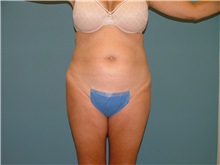 |  | 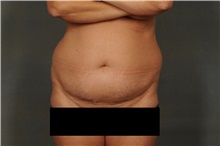 |  |
 |  | 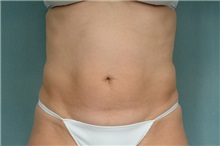 |  |
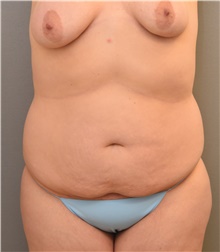 |  |  |  |
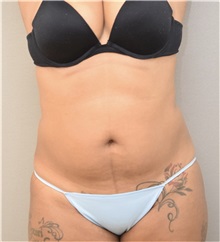 |  |  |  |
What words should I know about liposuction?
Breast reduction
Also known as reduction mammaplasty, reduction of breast size by surgery.
Cannula
A thin, hollow tube used during liposuction to loosen excess fat.
Facelift
A surgical procedure, also known as rhytidectomy, to reduce sagging of the mid-face, jowls and neck.
General anesthesia
Drugs and/or gases used during an operation to relieve pain and alter consciousness.
Hematoma
Blood pooling beneath the skin.
Intravenous sedation
Sedatives administered by injection into a vein to help you relax.
Lipoplasty
Another term for liposuction.
Liposuction
Also called lipoplasty or suction lipectomy, this procedure vacuums out fat from beneath the skin’s surface to reduce fullness.
Local anesthesia
A drug injected directly to the site of an incision during an operation to relieve pain.
Suction lipectomy
Another term for liposuction.
Sutures
Stitches used by surgeons to hold skin and tissue together.
Tumescent liposuction
Also known as super-wet liposuction, involves an infusion of saline solution with adrenaline and possibly anesthetic prior to removal of excess fat.
Tummy tuck
A surgical procedure, also known as abdominoplasty, to correct the apron of excess skin hanging over your abdomen.
Ultrasound-assisted lipoplasty
Also known as ultrasonic liposuction, uses ultrasonic energy to liquefy excess fat prior to surgical suctioning.
How do I choose a plastic surgeon for liposuction?
Liposuction involves many choices. The first and most important is selecting a board-certified plastic surgeon you can trust who is a member of the American Society of Plastic Surgeons (ASPS).
ASPS member surgeons meet rigorous standards:
- Board certification by the American Board of Plastic Surgery® (ABPS) or in Canada by the Royal College of Physicians and Surgeons of Canada®
- Complete at least six years of surgical training following medical school with a minimum of three years of plastic surgery residency training
- Pass comprehensive oral and written exams
- Graduate from an accredited medical school
- Complete continuing medical education, including patient safety, each year
- Perform surgery in accredited, state-licensed, or Medicare-certified surgical facilities
Do not be confused by other official-sounding boards and certifications.
The ABPS is recognized by the American Board of Medical Specialties (ABMS), which has approved medical specialty boards since 1934. There is no ABMS recognized certifying board with “cosmetic surgery” in its name.
By choosing a member of the American Society of Plastic Surgeons, you can be assured that you are choosing a qualified, highly-trained plastic surgeon who is board-certified by the ABPS or the Royal College of Physicians and Surgeons of Canada.
